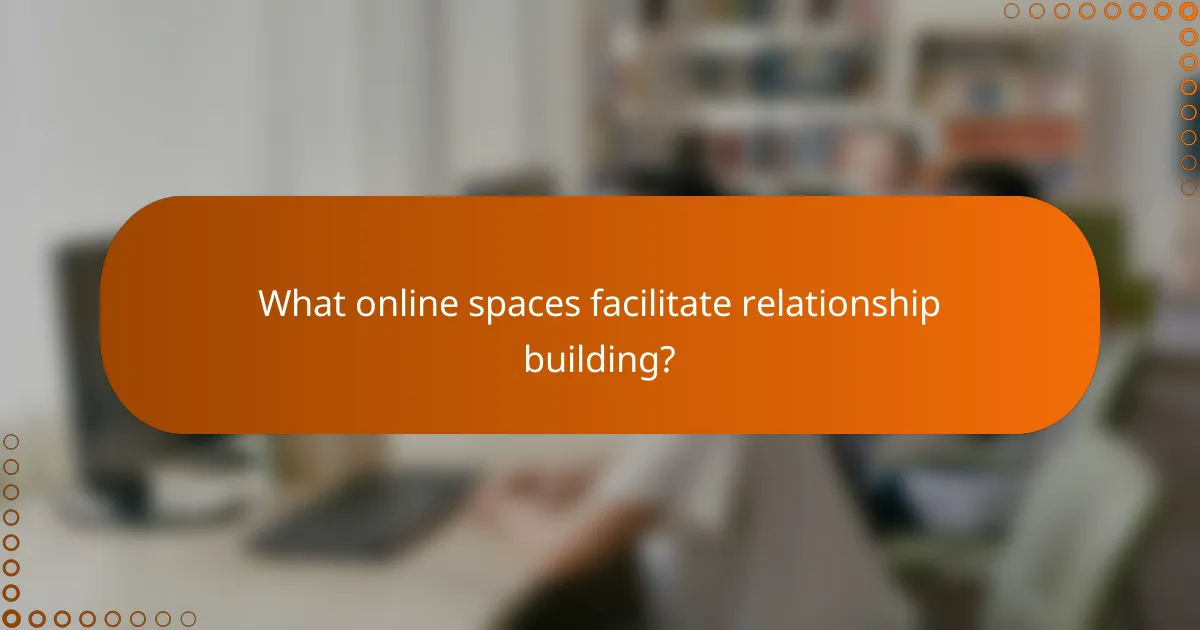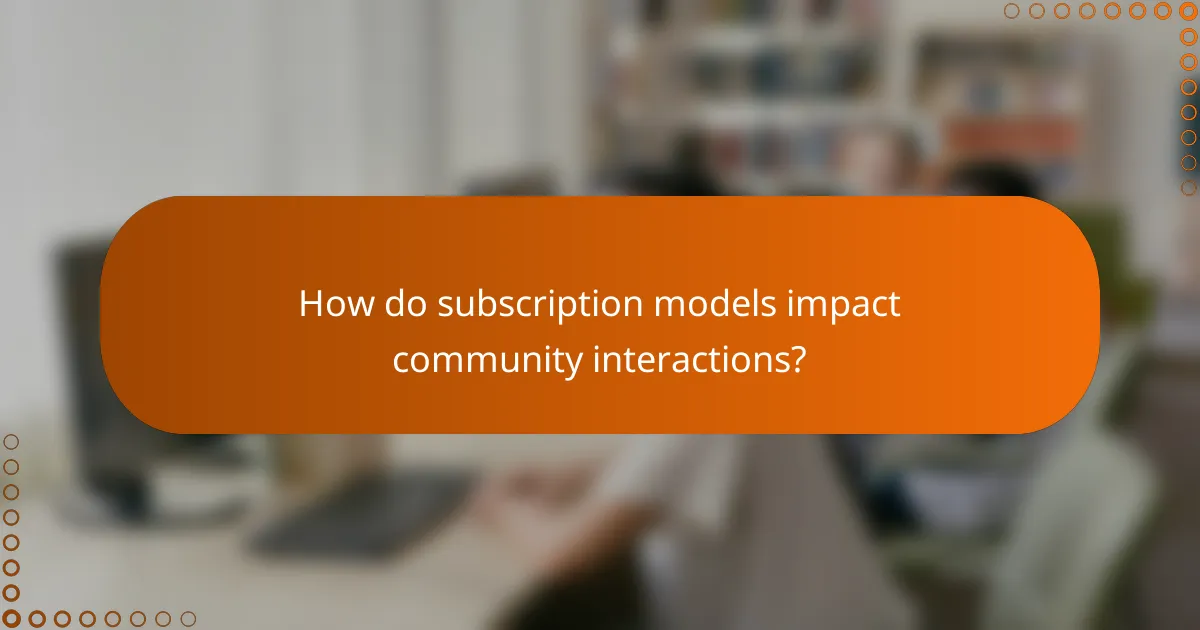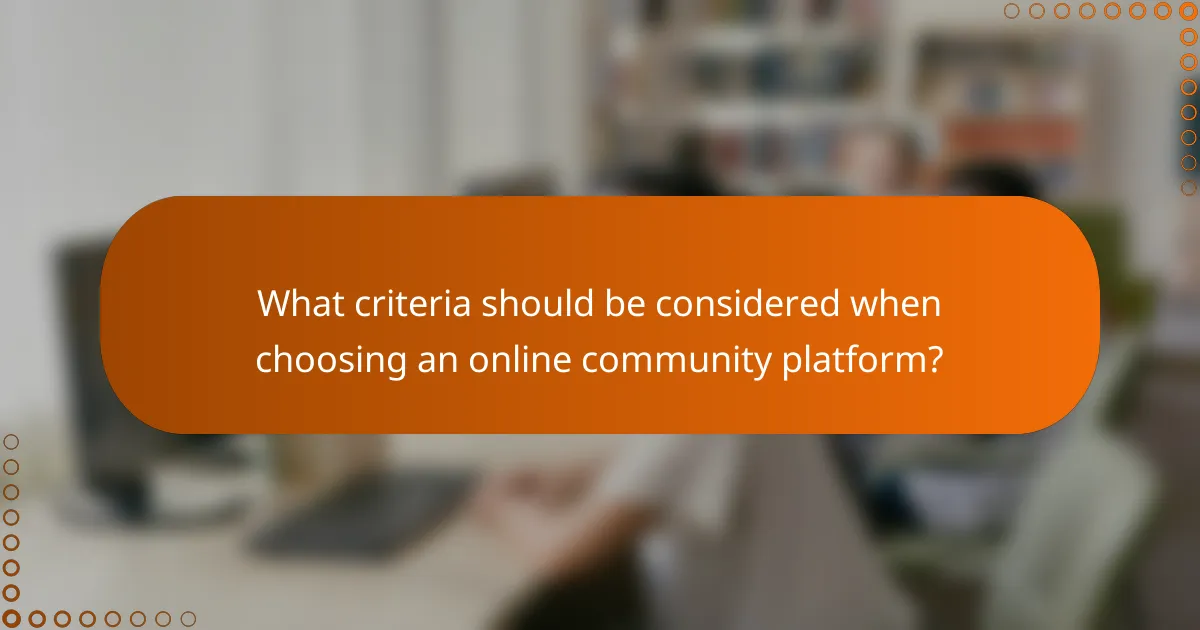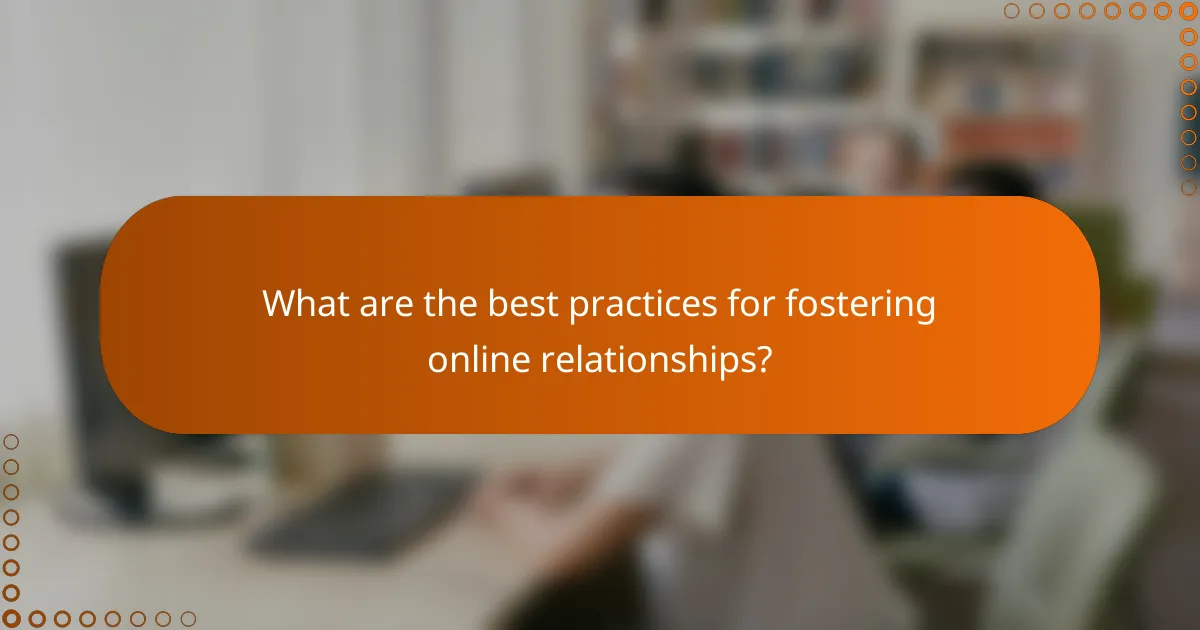Community connections play a vital role in enhancing member interaction by creating a sense of belonging and promoting active participation. Online spaces, such as social media groups and virtual event platforms, serve as essential environments for relationship building, allowing individuals to connect and collaborate effectively. Subscription models further enrich these interactions by offering exclusive access to resources, fostering a deeper sense of value and engagement among members.

How can community connections enhance member interaction?
Community connections significantly enhance member interaction by fostering a sense of belonging and encouraging active participation. When members feel connected, they are more likely to engage with one another, share ideas, and collaborate on projects.
Increased engagement through forums
Forums serve as a platform for members to discuss topics of interest, share experiences, and seek advice. By creating threads around specific subjects, members can contribute at their convenience, leading to deeper discussions and stronger relationships.
To maximize engagement, community managers should encourage regular participation by highlighting popular threads and recognizing active contributors. This can be achieved through gamification elements, such as badges or points, which motivate members to interact more frequently.
Real-time communication via chat platforms
Chat platforms enable real-time communication, allowing members to connect instantly. This immediacy fosters a dynamic environment where questions can be answered quickly, and ideas can be exchanged in a fluid manner.
Choosing the right chat platform is crucial; options like Slack or Discord offer various features, such as channels for different topics and direct messaging. To enhance interaction, set guidelines for respectful communication and encourage members to share updates or insights regularly.
Collaborative projects and activities
Engaging in collaborative projects helps members build relationships through shared goals. These activities can range from group challenges to community service initiatives, providing opportunities for teamwork and collective problem-solving.
To initiate collaboration, consider organizing brainstorming sessions or workshops where members can contribute their skills. Clearly define roles and responsibilities to ensure everyone feels valued and accountable, which can strengthen the community bond.

What online spaces facilitate relationship building?
Online spaces that facilitate relationship building include social media groups, dedicated platforms, and virtual event spaces. These environments provide opportunities for individuals to connect, share interests, and foster community engagement.
Social media groups like Facebook
Social media groups, particularly on platforms like Facebook, allow users to join communities based on shared interests or goals. Members can post updates, ask questions, and share resources, creating a dynamic environment for interaction.
To maximize engagement, consider actively participating in discussions and responding to others’ posts. Avoid spamming the group with irrelevant content, as this can lead to disengagement from other members.
Dedicated platforms such as Discord
Discord is a popular platform for community interaction, especially among gamers and hobbyists. It offers text and voice channels where members can communicate in real-time, fostering a sense of immediacy and connection.
When using Discord, create channels that cater to specific topics or activities to keep conversations organized. Regularly scheduled events or game nights can also help strengthen relationships among members.
Virtual event spaces like Hopin
Virtual event spaces like Hopin enable users to attend webinars, workshops, and networking events, providing structured opportunities for relationship building. These platforms often include features like breakout rooms and chat functions to facilitate interaction.
To make the most of these events, actively engage with speakers and participants by asking questions and sharing insights. Follow up with connections made during the event to nurture those relationships further.

How do subscription models impact community interactions?
Subscription models significantly enhance community interactions by providing members with exclusive access to resources and events. These models foster a sense of belonging and engagement, as members feel valued and connected through shared experiences and content.
Exclusive content for members
Exclusive content is a key feature of subscription models, offering members unique articles, videos, or tools not available to the general public. This content can deepen engagement, as members are more likely to participate in discussions around material they cannot access elsewhere.
For example, a fitness community might provide specialized workout plans or nutrition guides exclusively for subscribers. This not only incentivizes membership but also encourages members to share their experiences and results, enhancing community interaction.
Member-only events and webinars
Member-only events and webinars create opportunities for direct interaction among community members. These events can range from virtual meetups to expert-led workshops, allowing members to network and learn in a focused environment.
For instance, a professional association might host monthly webinars featuring industry leaders, giving members a platform to ask questions and engage with peers. This direct access fosters stronger relationships and a sense of community among participants.
Tiered membership benefits
Tiered membership benefits allow communities to cater to different levels of engagement and investment. By offering varying levels of access and perks, organizations can appeal to a broader audience while encouraging members to upgrade for enhanced experiences.
For example, a tiered model might include basic access to content for lower-tier members, while higher tiers offer exclusive events, one-on-one consultations, or premium resources. This structure not only boosts revenue but also motivates members to interact more as they seek to maximize their benefits.

What criteria should be considered when choosing an online community platform?
When selecting an online community platform, consider user interface, integration capabilities, and scalability. These factors directly impact user engagement, operational efficiency, and the platform’s ability to grow with your community.
User interface and experience
The user interface (UI) and overall experience are crucial for attracting and retaining members. A clean, intuitive design encourages participation and reduces frustration. Look for platforms that offer customizable layouts and mobile-friendly designs to enhance accessibility.
Evaluate the ease of navigation and the availability of features like search functionality and content categorization. A well-structured UI can significantly improve user satisfaction and interaction rates.
Integration with existing tools
Choosing a platform that integrates seamlessly with your current tools is essential for maintaining workflow efficiency. Consider platforms that support integrations with popular software such as CRM systems, email marketing tools, and social media channels.
Check for APIs or built-in connectors that facilitate data sharing and communication between platforms. This can streamline operations and enhance the overall user experience by providing a cohesive environment.
Scalability for future growth
Scalability is vital for accommodating growth as your community expands. Ensure the platform can handle increasing user numbers and content volume without compromising performance. Look for features like tiered pricing plans that allow for easy upgrades as your needs evolve.
Assess the platform’s ability to support additional functionalities, such as advanced analytics or enhanced security measures, as your community grows. A scalable platform will save you time and resources in the long run, preventing the need for a complete overhaul later on.

How can communities measure member engagement?
Communities can measure member engagement through various methods that assess interactions, feedback, and participation. Effective measurement helps identify active members, understand their needs, and enhance overall community experience.
Analytics tools for tracking interactions
Analytics tools provide insights into member interactions by tracking metrics such as page views, post likes, and comment activity. Popular platforms like Google Analytics or social media insights can help communities gauge which content resonates most with members.
When selecting an analytics tool, consider ease of use, integration capabilities, and the specific metrics you want to track. Regularly reviewing these metrics can help communities adjust their strategies to boost engagement.
Surveys and feedback mechanisms
Surveys and feedback mechanisms are essential for gathering direct input from members about their experiences and preferences. Tools like SurveyMonkey or Google Forms allow communities to create tailored surveys that can be distributed via email or social media.
To maximize response rates, keep surveys concise and focused on key areas of interest. Offering incentives, such as entry into a prize draw, can also encourage participation and yield more valuable insights.
Participation metrics in events
Tracking participation metrics during events helps communities understand member engagement levels in real-time. Metrics may include attendance numbers, active participation in discussions, or contributions to collaborative projects.
Utilizing registration tools and post-event surveys can provide a clearer picture of member involvement. Analyzing these metrics can inform future event planning and help tailor activities to better meet member interests.

What are the best practices for fostering online relationships?
Fostering online relationships requires consistent engagement, support for member initiatives, and a welcoming atmosphere. These practices help build trust and encourage active participation within the community.
Regular communication and updates
Consistent communication is vital for maintaining relationships in online spaces. Regular updates about community events, changes, or important news keep members informed and engaged. Aim for weekly or bi-weekly communications to ensure members feel connected.
Utilize various channels such as newsletters, social media posts, and community forums to reach members. This multi-channel approach caters to different preferences and increases the likelihood of engagement.
Encouraging member-led initiatives
Empowering members to lead initiatives fosters a sense of ownership and belonging. Encourage members to propose projects, organize events, or create content that reflects their interests and expertise. This not only enhances community engagement but also diversifies the activities available.
Consider implementing a small grants program or providing resources for member-led initiatives. This support can motivate members to take action and contribute meaningfully to the community.
Creating a welcoming environment
A welcoming environment is crucial for attracting and retaining members. Establish clear guidelines that promote respect and inclusivity, ensuring everyone feels valued. Highlight community values in your communications to reinforce this welcoming atmosphere.
Consider hosting orientation sessions or introductory events for new members. These gatherings can help newcomers feel comfortable and connected, facilitating smoother integration into the community.
